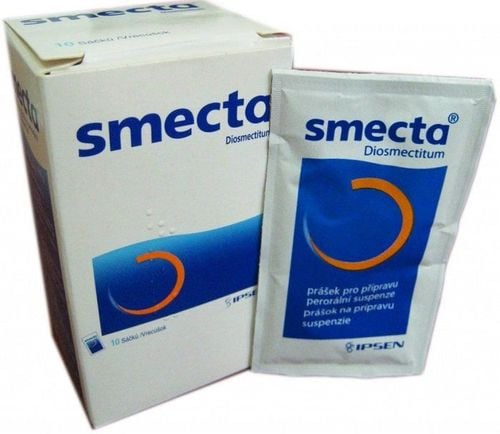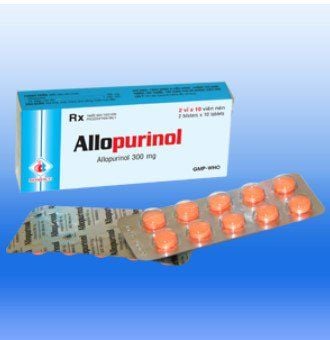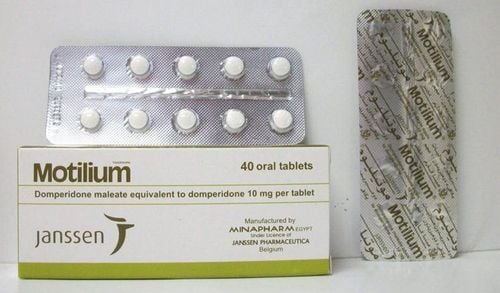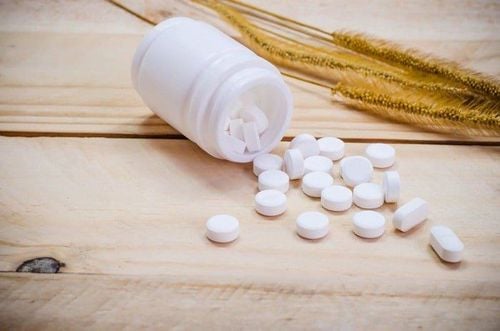This is an automatically translated article.
Dutased is generally recommended for the treatment of bacterial infections in both children and adults. Users of Dutased drug need to carefully read the instructions for use and strictly follow the instructions given by the doctor to ensure high treatment efficiency.
1. What is Dutased?
Dutased is an antibiotic used to treat infections caused by fungi, bacteria, viruses or parasites. Dutased drug is a product of Thanh Hoa Pharmaceutical & Medical Equipment Joint Stock Company, which is prepared in the form of powder for oral suspension and packaged in a box of 1 bottle of 20g mixed with 50ml of suspension.
In the drug Dutased contains the following main pharmaceutical ingredients:
Sulfamethoxazol with a concentration of 2000mg. Trimethoprim 400mg. Other excipients are enough in 1 package of powder for suspension.
2. Uses, indications and contraindications of Dutased
2.1. What does Dutased do? The main active ingredient Sulfamethoxazol in Dutased has antibiotic activity belonging to the group of Pyrimidine derivatives. Usually, Sulfamethoxazol will combine with Trimethoprim in a ratio of 5:1, helping to bring about a synergistic effect, thereby increasing the therapeutic effect of Dutased. Although each active ingredient, when used alone, has a bacteriostatic effect, but when combined together, it creates an effective bactericidal formula.
According to research, the active ingredient Sulfamethoxazol has a broad antibacterial spectrum against many gram-positive and negative aerobic bacteria, such as Streptococcus, Staphylococcus, Legionella pneumophila, Neisseria gonorrhoeae, Shigella, Enterobacter, Proteus indol-positive, E. coli, Salmonella, Haemophilus influenzae,... The active ingredient Sulfamethoxazol in Dutased is structurally similar to para aminobenzoic acid (PABA). Thanks to its high affinity for Dihydropteroate synthetase, the drug can compete with PABA, helping to inhibit the initial stage of folic acid synthesis of bacterial strains.
2.2. Indications for use of the drug Dutased Dutased is usually prescribed by doctors to treat the following infections:
Infections caused by susceptible bacteria. Respiratory tract infections such as sinusitis, pneumonia, otitis media, chronic bronchitis. Urinary tract infections - kidney, such as pyelonephritis, cystitis, acute and chronic prostatitis. Genital tract infections. Gastrointestinal infections, chronic dysentery. Bacterial infection caused by bacteria E.Coli, Shigella or Salmonella. Treatment of bacterial infections in children according to the doctor's own prescription. 2.3. Contraindication to the use of Dutased The following are cases where Dutased should not be used without a prescription from a specialist:
Do not use drugs containing Sulfamethoxazol, Trimethoprim or other pharmaceutical substances if the patient has a history Hypersensitivity or allergy to these ingredients. Dutased is contraindicated in patients who are allergic to Trimethoprim or Sulfamide antibiotics. Dutased drug is not prescribed for patients with liver parenchyma damage, severe renal failure, and plasma drug concentrations cannot be measured. Dutased is contraindicated for people with severe hematological disorders. Do not use Dutased for pregnant women, people planning to become pregnant or mothers who are breastfeeding. Dutased is also not approved for use in premature (preterm) infants or premature infants < 6 weeks of age, except for the treatment or prevention of pneumocystis carinii pneumonia in children > 4 week old.
3. Dosage and instructions for taking Dutased
3.1 Dosage of Dutased The dose of Dutased is usually determined based on the age and infection status of each patient, specifically:
Children < 12 years old: The recommended dosage is according to normal weight. is 30mg Sulfamethoxazol & 6mg Trimethoprim / 1kg within 24 hours. Divide the dose into 2 equal doses with the standard dose as follows:
Children from 6 weeks to 5 months: Take 2.5ml every 12 hours. Children 6 months - 5 years: Take 5ml every 12 hours. Children 6-12 years old: Take 10ml every 2 hours. Children > 12 years and adults: Take 20ml every 12 hours.
Patients need to maintain treatment of infection with Dutased until the symptoms are completely gone, about 2 days. For the most part, the recommended duration of treatment is usually at least 5 days. In the event that after a week of treatment with Dutased, the patient does not achieve clinical signs of improvement, then it is necessary to notify the doctor to review and find out the specific cause.
For patients with alveolitis caused by Pneumocystis carinii, the doctor may prescribe Dutased in high doses, consisting of 100mg Sulfamethoxazol and 20mg Trimethoprim/kg body weight/day. Divide the dose into 2 or more doses and use within 2 weeks.
3.2 Guidelines for safe and effective use of Dutased drug Dutased drug is prepared in the form of a powder for suspension for oral use. Patients can mix the drug in the ratio of 1 pack (including 200mg of Sulfamethoxazole and 40mg of Trimethoprim) in 5ml of water. After breaking, pay attention to shake the suspension well to ensure that the ingredients are evenly mixed.
4. Possible side effects when taking Dutased
During the treatment of infections with Dutased, patients may experience some of the following adverse reactions:
Superinfection and infection. Blood disorders. Overgrowth of fungi. Lymphoma system disorders. Neutropenia/leukopenia, thrombocytopenia, aplastic anemia, megaloblastic anemia, methaemoglobin anemia, hemolytic anemia. Some minor hematological changes were reversible upon discontinuation of treatment. Immune system disorder. Nervous system disorder. Metabolic disorder. Allergic myocarditis, systemic lupus erythematosus, or angioedema. Hyperkalemia, hyponatremia, hypoglycemia, anorexia. Nausea, diarrhea or vomiting. Pancreatitis or pseudomembranous membranes. Hepatobiliary disorders. Lyell syndrome, photosensitivity, erythema multiforme, exfoliative dermatitis, Stevens-Johnson syndrome. Decreased kidney function. Interstitial nephritis. If you experience any of the side effects listed above while taking Dutased, you should immediately inform your doctor to treat it early and prevent the risk of bad sequelae.
5. Things to keep in mind when using Dutased
5.1 What precautions should be taken while using Dutased? When treating bacterial infections with Dutased antibiotics, patients should keep the following in mind:
It is possible to have severe reactions that are dangerous to the patient's health while taking Dutased, however. Very rare, including toxic epidermal necrolysis, aplastic anemia, Stevens-Johnson syndrome, certain serious blood disorders, fulminant hepatic necrosis or respiratory hypersensitivity. If a skin rash reaction is detected, the patient should stop using Dutased immediately. Always use caution when using Dutased for the elderly, because these are the subjects who are more sensitive to the adverse side effects of the drug and are more easily affected when accompanied by other problems such as depression. liver or kidney failure. Caution should be exercised when treating infections with Dutased in patients with suspected folate deficiency. At that time, the patient should pay attention to adequate folate supplementation. Regularly maintain an adequate amount of urine while using Dutased. Occasionally, patients may experience crystalluria or sulphonamide crystals in cold urine. The risk of this happening is increased in malnourished patients. If Dutased is used for a long time, the patient should have a blood cell test periodically monthly because some changes that are not obvious in the blood test results due to folate deficiency may occur. However, these changes are reversible when the patient takes about 5-10mg of folic acid/day. This dose of folic acid supplement did not affect the antibacterial activity of Dutased. Dutased should be used with caution in patients with glucose-6-phosphate dehydrogenase (G-6-PD) deficiency to prevent the risk of hemolysis. Patients with bronchial asthma or severe allergies should use caution when taking Dutased. Remember to shake Dutased well before taking it to ensure uniform dispersion. Store the medicine in a dry place, away from direct sunlight or mold breeding areas. If you encounter any side effects while taking Dutased, the patient should immediately notify the doctor in charge of treatment for early remedial measures. The drug is not recommended for use by pregnant or nursing mothers, if you must take Dutased, you need to talk with your doctor to carefully weigh the benefits and risks that this drug may bring. 5.2 What drugs does Dutased interact with? When Dutased is combined with some other drugs, there may be an interaction reaction that reduces the effectiveness of the active ingredients or increases the risk of serious development of some side effects. The following are drugs that can antagonize Dutased when taken together, including:
Thrombocytopenia or hemorrhagic rash in elderly patients when Dutased is combined with a diuretic (Thiazid). Increases prothrombin time when the anticoagulant Warfarin is co-administered with Dutased. Inhibition of the hepatic metabolism of Phenytoin when this drug is taken with Dutased. The usual dose of Dutased can increase Phenytoin's biological half-life by up to 39% and decrease the clearance rate of Phenytoin metabolite by about 27%. Increases methotrexate drug concentration when co-administered with Dutased. Increased blood levels of Digoxin during concomitant treatment with Dutased, especially in elderly patients. If both drugs are required, the patient should have regular monitoring of serum digoxin levels.
Please dial HOTLINE for more information or register for an appointment HERE. Download MyVinmec app to make appointments faster and to manage your bookings easily.













